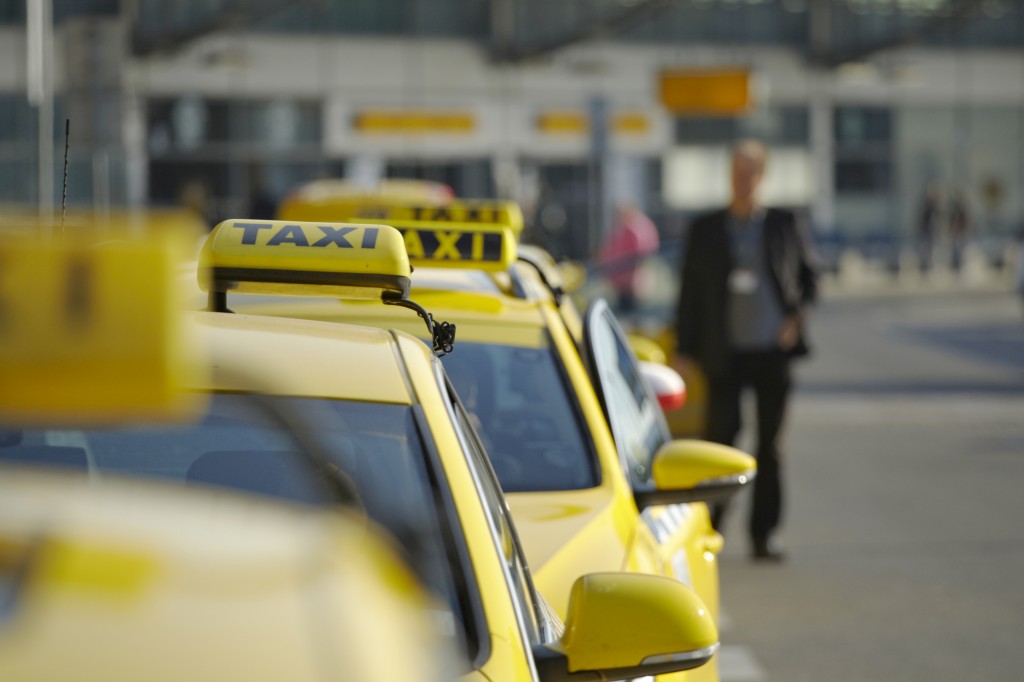Traveling by taxi is generally a safe alternative to driving or even walking in an unfamiliar destination, but like any other form of transportation, it’s not entirely without risk. Make sure your travelers keep these crucial tips in mind when traveling by taxi, mini cab or other private hire vehicles:
1) Make Sure It’s Legal: Always choose a well-marked cab with a lighted taxi roof sign that contains a prominent logo. You should see an empty backseat, interior door handle that actually works, meter, radio, and ID badge. Many cities require the purchase of a license called a medallion (a swatch of medal that is generally on the back of the cab)—this shows that the taxi is legal and has been checked by city officials.
Important note: Taxi cabs in developing countries may not have meters or other characteristics of a licensed/regulated vehicle. For information and advice about the taxi landscape of your destination, visit the State Department’s Country Information pages. Simply enter your destination in the box, select “go” and then scroll down to the Travel & Transportation section.
2) Call, Don’t Hail: Whenever possible, call for a taxi instead of hailing one – your hotel concierge can happily call a taxi for you, free of charge. Yes, this can be a bit of a pain, but if you do a little research ahead of time (we love TaxiFareFinder.com!) you’ll be in good shape. When calling for a cab, speak softly and in private as there are criminals who prey on unsuspecting travelers by pretending to be drivers. Don’t know the local language? Brush up on some key words before you go.
3) Get a Quote: It’s important to not only have an idea of what you’ll be paying ahead of time, but to also confirm this amount with your driver prior to getting into the cab. Hotels generally use a preferred network of taxi providers, so it’s easy to confirm the going rates with them. However, when you’re on your own, try using an app like A-Rix Meter or Taxometer. These apps even take conversion rates into account, which helps reduce the risk of getting shortchanged. Keep some local currency with you just in case (not all cabs have credit card machines) and keep local tipping etiquette guidelines top of mind.
4) Keep a Low Profile: The less accessible you are the better, so always sit in the back seat. Feeling chatty? Keep the conversation light, and be careful not to disclose any personal details about yourself. Have your phone handy and your personal belongings close to you. If you must put your bags in the trunk, don’t pay your fare until after your baggage has been unloaded. And as you’re approaching your destination (apps like Google Maps can help you get a handle on where things are located), get prepared to exit the cab as quickly as possible by having your payment ready and gathering all of your belongings.
5) Snap a Photo: In the event something were to go wrong, it’s worth having the taxi company, driver’s name, and driver ID number handy. Why? This information could be important if you need to file a police report or travel insurance claim. You can usually find these details displayed in the backseat of most cabs, so feel free to snap a pic (ever so subtly!) once you’re settled.
6) Be App Savvy: If you’re using a service like Uber or Lyft, make sure the license plate number in the app matches the one in the car that’s picking you up. Second, check that the name and picture of your driver in the app matches the one who’s driving the car. Uber also has a tool called ‘Share my ETA’ so you can let your friends and family know where you are in real time. And while both companies provide thorough background checks on their drivers, check out these additional safety measures before hopping into the car.
Does your company need help with proactively educating your employees on proper travel safety best practices like these? Contact us today.
Safe Travels!


